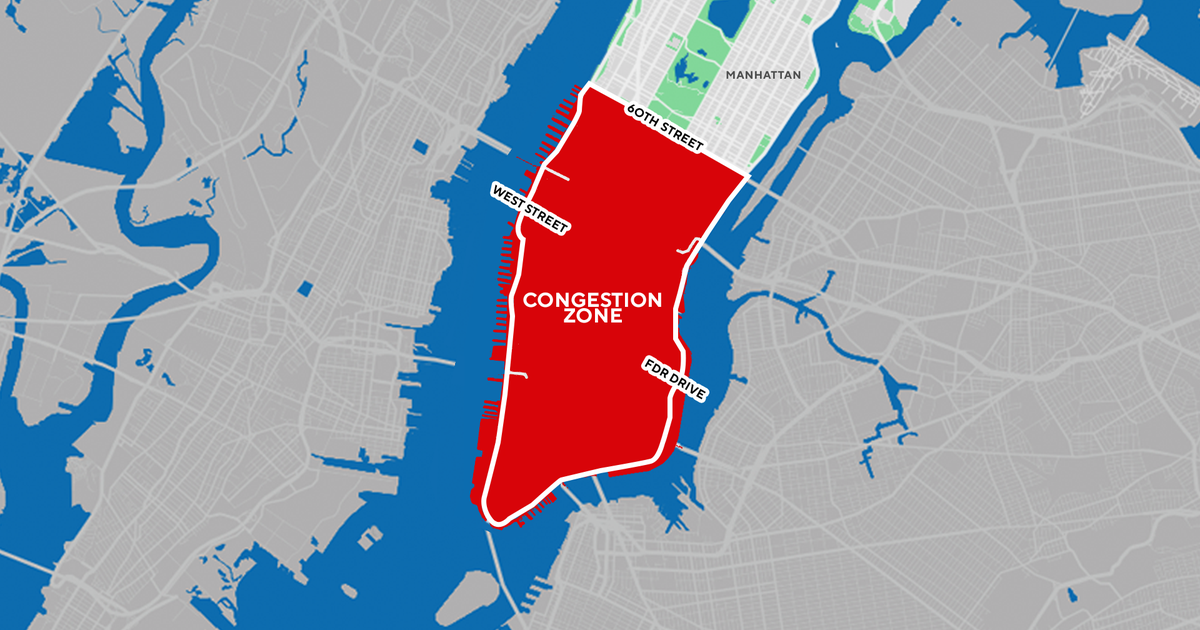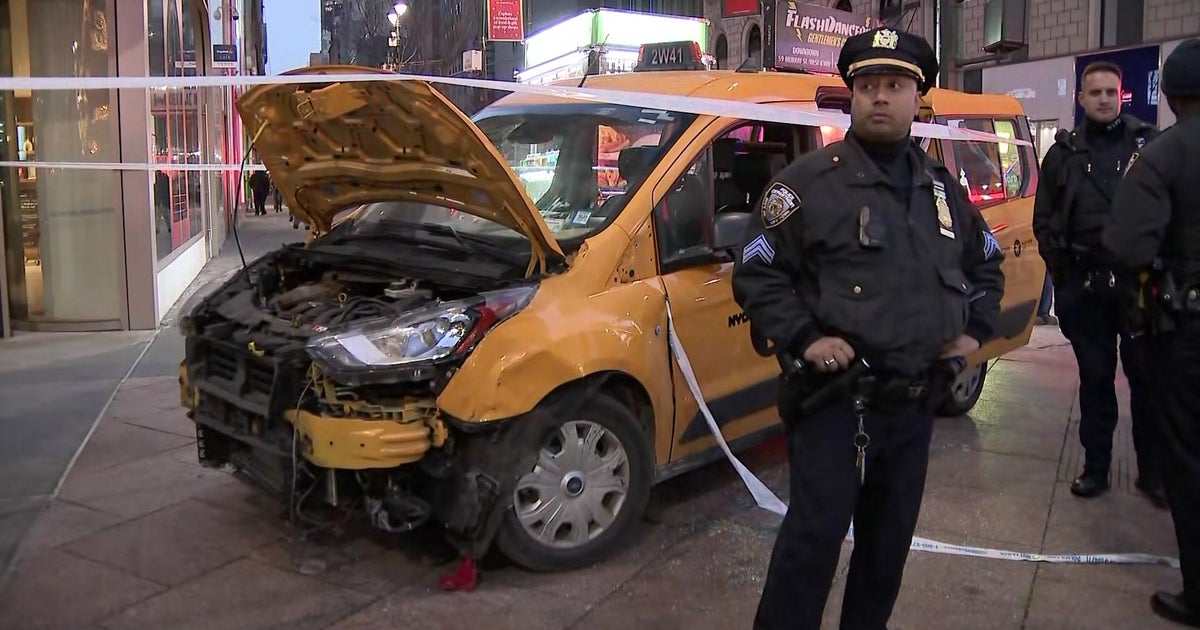Federal Government Proposes Rules For Routine Commercial Use Of Drones
WASHINGTON (CBSNewYork/AP) -- The federal government proposed long-awaited rules Sunday to usher in an era of commercial drones zipping through U.S. skies, but packages from these unmanned aircraft won't be landing on your doorstep any time soon.
The Federal Aviation Administration proposed requirements that commercial operators must meet, such as passing a knowledge test administered by the agency as well as a federal security check, in order to fly small drones, defined as weighing less than 55 pounds. It is likely to be two or three years before the rules are made final, but federal officials said that once they are in place the economic and safety benefits of unmanned aircraft are expected to be enormous.
Among the chores that officials envision drones performing: aerial photography and mapping, crop monitoring, and inspections of cell towers, bridges and other tall structures. But the proposal includes safety restrictions such as keeping drones within sight of operators at all times and no nighttime flights. That could mean no package or pizza deliveries by drone.
The move rules out Amazon.com's planned "Prime Air" drone delivery service, which would use automated technology to fly the drones over a distance, CBS2's Tony Aiello reported.
In a statement, Amazon said if it can't pioneer delivery by drone in the U.S., it might look overseas.
"We are committed to realizing our vision for Prime Air and are prepared to deploy where we have the regulatory support we need," the statement said.
Drones would also have to stay at least 5 miles away from an airport.
"They recognize the need for hobbyists, and provided the hobbyists don't fly their drones near airplanes or violate other rules, the hobbyists can continue," Sen. Charles Schumer, D-N.Y., added Sunday. "Many hobbyists were worried that they just might be put out of business."
Under the plan, drones could travel as fast as 100 mph, but flights would be limited to 500 feet in altitude or below. Flights over crowds would also be prohibited.
"We have tried to be flexible in writing these rules," said FAA Administrator Michael Huerta. "We want to maintain today's outstanding level of aviation safety without placing an undue regulatory burden on an emerging industry."
The agency is researching technology that Huerta said he hopes will eventually enable small drones to fly safely beyond the sight of operators. He emphasized that introduction of commercial drones into the national airspace will be a staged process. The government is also looking ahead to how larger drones might be allowed to fly in airspace shared by manned aircraft, for example, he said.
One of the key safety concerns is that without a human on board the ability to "see and avoid" other aircraft is limited. Another concern is that the link between the operator and a remote control aircraft can be broken, causing the drone to fly away until it loses power or collides with something.
Cases of flyaway drones getting stuck in trees or hitting buildings are rampant. Last month, a drone that its operator lost control of flew over the White House fence and crashed on the lawn before Secret Service agents could block it.
Even with the proposed safety restrictions, drones can transform as urban infrastructure management, farming, public safety, coastal security, military training, search and rescue, disaster response and more, the White House said in a presidential memorandum on privacy released in conjunction with the rules.
"The United States cannot afford to lag behind other countries in technological innovation because of regulatory foot-dragging. That's why I look forward to working with the FAA to ensure the swift implementation of effective, fair rules that unleash the potential of this innovative technology."
The memorandum lays out measures federal agencies must follow to guard against abuse of data collected in their drone flights. Among other steps, the order requires agencies to review privacy and civil rights protections before deploying drone technology and to adhere to a range of controls. Personally identifiable information collected in drone flights is to be kept no longer than 180 days, although there are exceptions.
It's questionable whether such steps will satisfy civil liberties advocates, who've objected strongly to the government's vigorous use of digital surveillance in the name of national security.
The proposal also raises the possibility that final rules may have a separate category for very small drones -- those weighing 4.4 pounds or less -- with fewer restrictions.
"I am very pleased to see a much more reasonable approach to future regulation than many feared," said Brendan Schulman, a New York attorney who unsuccessfully challenged FAA's restrictions on drone flights.
The agency currently bans commercial drone flights except for a few dozen companies that have been granted waivers. That ban will stay in place until the proposed regulations become final, but FAA officials plan to continue granting waivers on a case-by-case basis. About 300 waiver requests are pending, and new requests are being filed almost daily.
Sen. Cory Booker, D-N.J., issued a statement applauding the proposed regulations while criticizing the government for taking too long.
"For years, other countries have outpaced the United States in the development of commercial Unmanned Aerial Systems because we have lacked a regulatory framework for this emerging technology," Booker said. "For months, I've urged the FAA to act quickly to put forth a set of rules that promote innovation, ensure safety, and protect privacy, and I applaud the Obama Administration for taking this very important step forward today. But these proposed rules are long overdue.
The proposed rules are "a good first step" bringing the U.S. closer to realizing the benefits of drone technology, added Brian Wynne, president and CEO of the Association for Unmanned Vehicle Systems International, a trade group.
An FAA analysis points to an estimate by the trade association that drones will create 70,000 jobs with an economic impact of more than $13.6 billion in the first three years after their integration into U.S. skies.
In a big concession to industry, the FAA said it won't require an "airworthiness certificate" for small drones. The design and manufacture of each model of manned airplanes and helicopters go through a rigorous approval process by the FAA before they are granted airworthiness certificates. That can take years.
The FAA decided that drone technology was changing so rapidly that by the time a model received an airworthiness certificate the remote-controlled aircraft might already be out of date, Huerta said.
Drones have recently caused a couple of scares in New York City.
In July, two men were arrested on reckless endangerment charges after allegedly flying a drone too close to an NYPD helicopter near the George Washington Bridge.
Police have also had incidents with drones over Times Square during Super Bowl festivities last year and near Citi Field.
Last November, three pilots reported spotting drones flying near commercial aircraft on approach to John F. Kennedy Airport. Another drone was seen somewhere west of LaGuardia Airport.
There were also two drone sightings last year at Westchester County Airport, including one that came in the path of a landing plane, Schumer said.
(TM and © Copyright 2015 CBS Radio Inc. and its relevant subsidiaries. CBS RADIO and EYE Logo TM and Copyright 2015 CBS Broadcasting Inc. Used under license. All Rights Reserved. This material may not be published, broadcast, rewritten, or redistributed. The Associated Press contributed to this report.)



